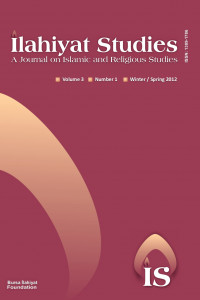An Essay Review of In the Age of Averroes: Arabic Philosophy in the Sixth/Twelfth Century by Peter Adamson (ed.)
Abstract
First paragraph: This volume concludes a series of three books devoted to Arabic philosophy. The first volume, published in 2007, addressed the sources and the reception of classical Arabic philosophy, and the second volume considered Arabic philosophy in the fourth/tenth century. It is immediately striking that the eleventh century, which, in line with the project, undoubtedly had to be qualified as the age of Ibn Sīnā, has been skipped. At first sight, there seems to be little philosophy during this time besides Ibn Sīnā himself and his so-called immediate disciples. Among the latter, however, one detects important differences in the way they address their master’s legacy. Moreover, the eleventh century is the period in which Ibn Sīnā’s philosophy ente-red Ashʿarite theology, perhaps already in al-Juwaynī’s thought and certainly in al-Ghazālī’s. Much of what comes to the fore in the pre-sent volume results from or has some basis in these facts. Let me add that in Muslim Andalusia during this century, one finds such a major thinker as Ibn Ḥazm, who, although above all a theologian, considered philosophical ideas and, inter alia, refers to al-Kindī. Hence, it is regrettable that no attention has been paid to this period. This said, the project as such has offered many new perspectives regarding classical Arabic philosophy, and the present volume is no exception. In particular, this volume shows the vivacity of philosophy, especially in Ibn Sīnā’s view, in the twelfth century. As Peter Adamson, the editor, states in the introduction, the twelfth century may be characterized as a second formative period.
References
- Jules Louis Janssens ,An Essay Review of In the Age of Averroes: Arabic Philosophy in the Sixth/Twelfth Century, edited by Peter Adamson, (Warburg Institute Colloquia, 16), (London: The Warburg Institute & Turin: Nino Aragno Editore, 2011), 288 pp., ISBN: 978-0-85481-154-0
An Essay Review of In the Age of Averroes: Arabic Philosophy in the Sixth/Twelfth Century by Peter Adamson (ed.)
Abstract
This volume concludes a series of three books devoted to Arabic philosophy. The first volume, published in 2007, addressed the sources and the reception of classical Arabic philosophy, and the second volume considered Arabic philosophy in the fourth/tenth century. It is immediately striking that the eleventh century, which, in line with the project, undoubtedly had to be qualified as the age of Ibn Sīnā, has been skipped. At first sight, there seems to be little philosophy during this time besides Ibn Sīnā himself and his so-called immediate disciples. Among the latter, however, one detects important differences in the way they address their master’s legacy. Moreover, the eleventh century is the period in which Ibn Sīnā’s philosophy ente-red Ashʿarite theology, perhaps already in al-Juwaynī’s thought and certainly in al-Ghazālī’s. Much of what comes to the fore in the pre-sent volume results from or has some basis in these facts. Let me add that in Muslim Andalusia during this century, one finds such a major thinker as Ibn Ḥazm, who, although above all a theologian, considered philosophical ideas and, inter alia, refers to al-Kindī. Hence, it is regrettable that no attention has been paid to this period. This said, the project as such has offered many new perspectives regarding classical Arabic philosophy, and the present volume is no exception. In particular, this volume shows the vivacity of philosophy, especially in Ibn Sīnā’s view, in the twelfth century. As Peter Adamson, the editor, states in the introduction, the twelfth century may be characterized as a second formative period.
Keywords
References
- Jules Louis Janssens ,An Essay Review of In the Age of Averroes: Arabic Philosophy in the Sixth/Twelfth Century, edited by Peter Adamson, (Warburg Institute Colloquia, 16), (London: The Warburg Institute & Turin: Nino Aragno Editore, 2011), 288 pp., ISBN: 978-0-85481-154-0
Details
| Primary Language | English |
|---|---|
| Subjects | Religious Studies |
| Journal Section | Reviews |
| Authors | |
| Publication Date | September 29, 2012 |
| Submission Date | April 13, 2012 |
| Published in Issue | Year 2012 Volume: 3 Issue: 1 |


